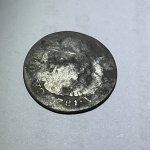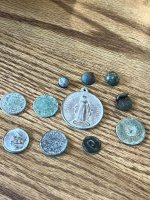gazzahk
Bronze Member
- Nov 14, 2015
- 1,714
- 2,573
- Primary Interest:
- All Treasure Hunting
- Thread starter
- #21
Not covered in Oaks just a grove of Oak trees.. Mainly pines were on the island. But oaks were useful in naval stores too. She does not argue that only pine tar was being made there but a variety of naval stores ie ship masts etc..Robot I agree. Taking the pine trees to Oak Island would be foolish. Besides wasn't the island covered with oak? A tar kiln on Oak Island is just scratching for an answer.
My question re her theory is more if they were cutting down heaps of pines on the island where are all the pine stumps?
I can see setting up the processing on a small island near the main land. ie easier to get things on and off the ships, easier to keep control of the slaves, easier to keep the natives away and protect your operation, I would guess they would of also been bringing logs across from the mainland on barges if her theory is correct. It may also be the case that being an island there were subject to different laws/rules etc or simply that it was cheap to acquire.









